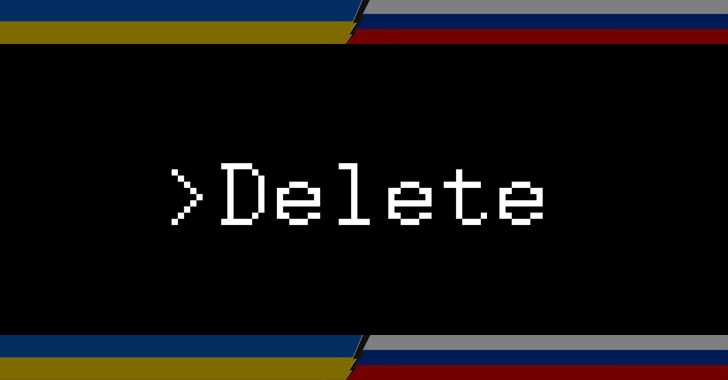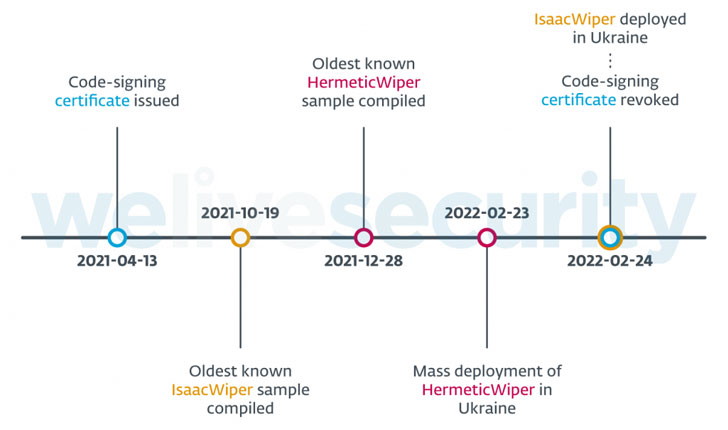A new data wiper malware has been observed deployed against an unnamed Ukrainian government network, a day after destructive cyber attacks struck multiple entities in the country preceding the start of Russia's military invasion.
Slovak cybersecurity firm ESET dubbed the new malware "IsaacWiper," which it said was detected on February 24 in an organization that was not affected by HermeticWiper (aka FoxBlade), another data wiping malware that targeted several organizations on February 23 as part of a sabotage operation aimed at rendering the machines inoperable.
Further analysis of the HermeticWiper attacks, which infected at least five Ukrainian organizations, have revealed a worm constituent that propagates the malware across the compromised network and a ransomware module that acts as a "distraction from the wiper attacks," corroborating a prior report from Symantec.
"These destructive attacks leveraged at least three components: HermeticWiper for wiping the data, HermeticWizard for spreading on the local network, and HermeticRansom acting as a decoy ransomware," the company said.
In a separate analysis of the new Golang-based ransomware, Russian cybersecurity company Kaspersky, which codenamed the malware "Elections GoRansom," characterized it as a last-minute operation, adding it was "likely used as a smokescreen for the HermeticWiper attack due to its non-sophisticated style and poor implementation."
As an anti-forensic measure, HermeticWiper is also designed to hinder analysis by erasing itself from the disk by overwriting its own file with random bytes.
ESET said it did not find "any tangible connection" to attribute these attacks to a known threat actor, with the malware artifacts implying that the intrusions had been planned for several months, not to mention the fact that the targeted entities suffered compromises well in advance to the wiper's deployment.
"This is based on several facts: the HermeticWiper PE compilation timestamps, the oldest being December 28, 2021; the code-signing certificate issue date of April 13, 2021; and the deployment of HermeticWiper through the default domain policy in at least one instance, suggesting the attackers had prior access to one of that victim's Active Directory servers," said Jean-Ian Boutin, ESET head of threat research.
Also unknown are the initial access vectors used to deploy both the wipers, although it's suspected that the attackers leveraged tools like Impacket and RemCom, a remote access software, for lateral movement and malware distribution.
Furthermore, IsaacWiper shares no code-level overlaps with HermeticWiper and is substantially less sophisticated, even as it sets out to enumerate all the physical and logical drives before proceeding to carry out its file wiping operations.
"On February 25, 2022, attackers dropped a new version of IsaacWiper with debug logs," the researchers said. "This may indicate that the attackers were unable to wipe some of the targeted machines and added log messages to understand what was happening."
Found this article interesting? Follow THN on Facebook, Twitter and LinkedIn to read more exclusive content we post.
.png)
 2 years ago
183
2 years ago
183 


















 Bengali (Bangladesh) ·
Bengali (Bangladesh) ·  English (United States) ·
English (United States) ·